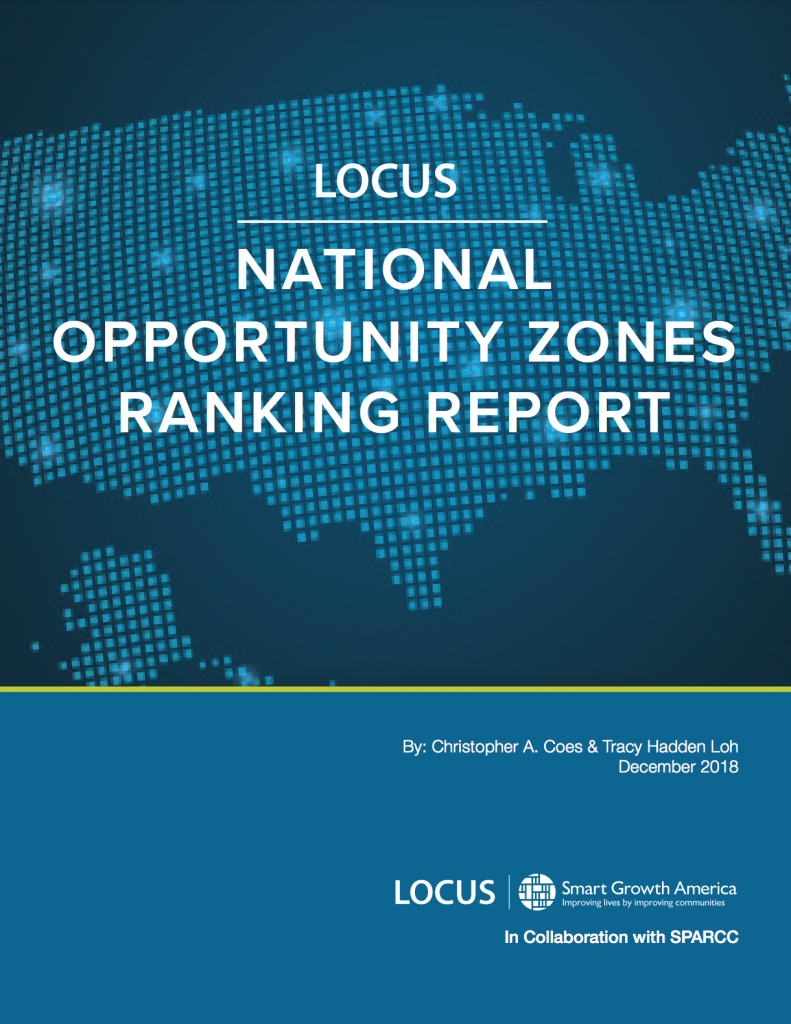
News
By Smart Growth America, December 13, 2018

The newly created Opportunity Zones program will likely go down as the largest and most significant federal community development initiative in U.S. history, with trillions of dollars in new private investment about to start flowing into pre-designated low-income communities around the country.
 The biggest question today is this: will these investments benefit the people living in these communities now, or will they be displaced as new interest and development brings increased property values and rents? And what kind of development will this incentive bring? Unsustainable, car-dependent sprawl (the dominant growth paradigm in the United States today) or walkable, mixed-use communities with a variety of housing options for everyone?
The biggest question today is this: will these investments benefit the people living in these communities now, or will they be displaced as new interest and development brings increased property values and rents? And what kind of development will this incentive bring? Unsustainable, car-dependent sprawl (the dominant growth paradigm in the United States today) or walkable, mixed-use communities with a variety of housing options for everyone?
We are on the front lines of ensuring that question gets answered the right way.
New research released today by LOCUS (a program of Smart Growth America) and The Center for Real Estate and Urban Analysis at George Washington University meticulously ranked and assessed 7800+ Opportunity Zones by their smart growth potential and current social equity to identify which ones are positioned to bring positive social, environmental, and economic returns.
View the complete rankings and the full LOCUS National Opportunity Zones Ranking Report.
The crux of the report is a ranking of all of Opportunity Zones with a new “Smart Growth Potential” filter. Which zones could best spur economic development in inclusive walkable communities? How can local policymakers and community groups in lower scoring zones help attract investment?
What did we find?
This research revealed a tale of two zones. The majority of Americans living in Opportunity Zones are in communities that force them to pay higher housing and transportation costs while being subjected to higher negative social and health impacts and a lower quality of life. The magnitude and scale of this tragedy is a reality check on the thought that the Opportunity Zone tax incentive will be a silver bullet. But if done right, this tax incentive could address decades of poor land use, institutional inequities, and development decisions to improve the quality of life for many Americans.
Step one is knowing which places could bring the best triple-bottom-line returns.
This new report will help investors identify which Opportunity Zones should be prioritized in order to deliver positive economic, environmental, and social returns. And it provides local policymakers and community groups with a policy framework to manage and ensure equitable, inclusive development in Opportunity Zones.
Related News

© 2025 Smart Growth America. All rights reserved
Site By3Lane Marketing








